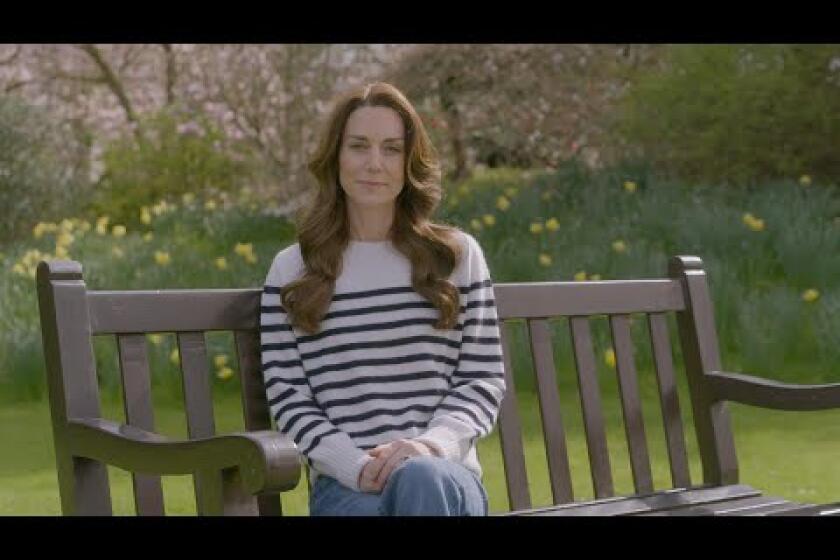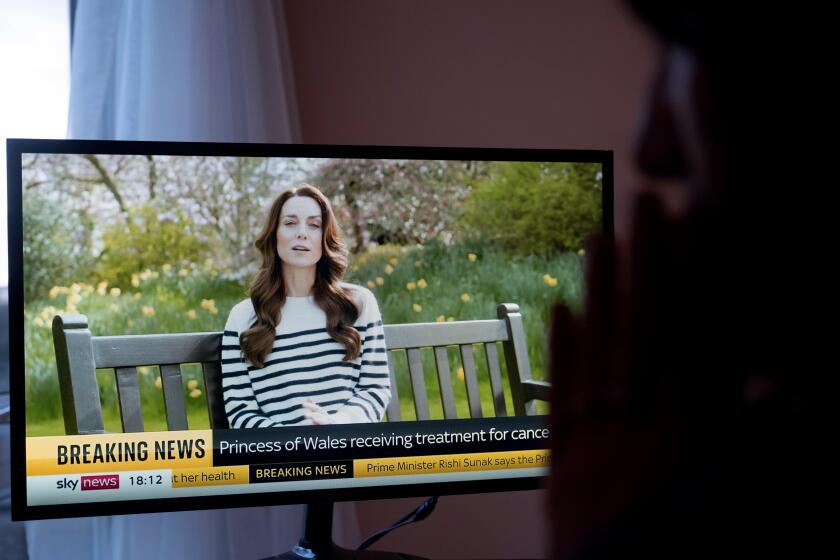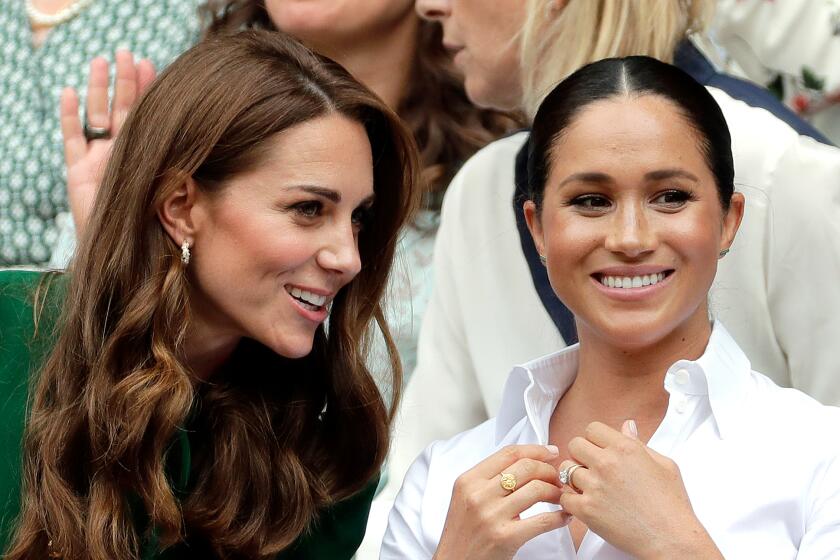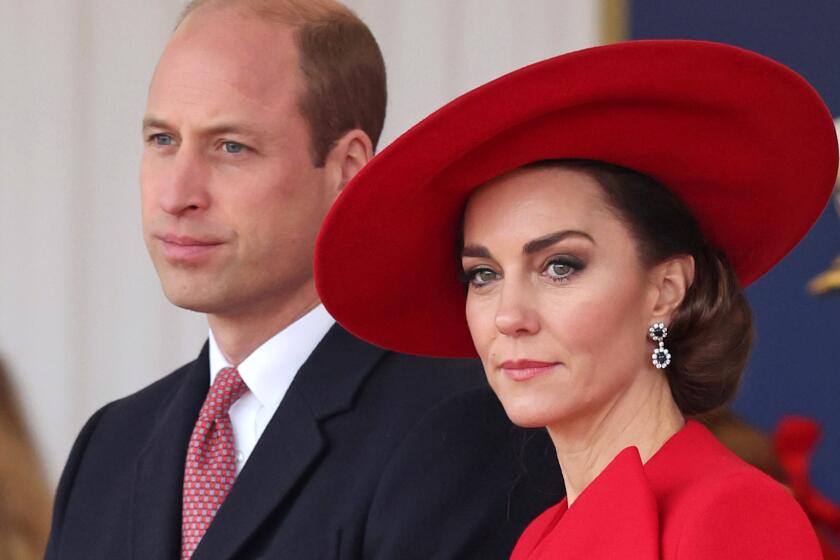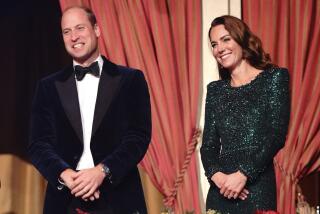Q&A: What oncologists can glean from Kate Middleton’s cancer announcement
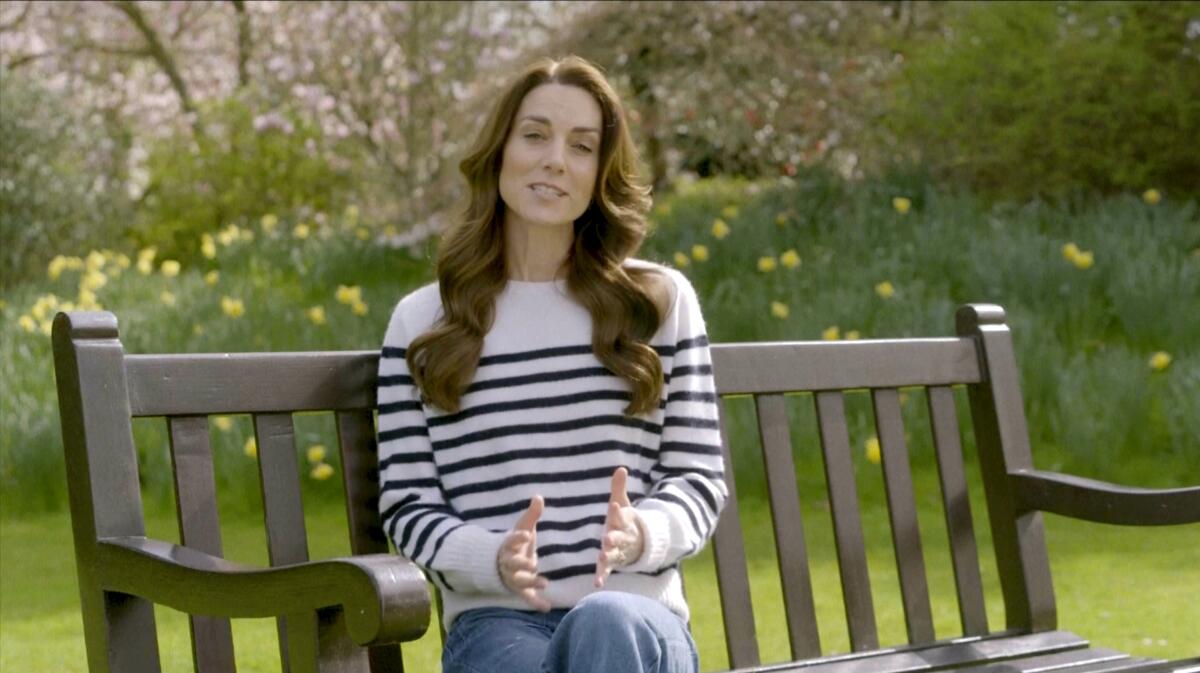
- Share via
After months of speculation about her recent health challenges, Catherine, Princess of Wales, revealed Friday that she has cancer.
The video announcement was short on specifics, prompting a new set of questions about her condition. She said she was initially told her “condition was non-cancerous.” Learning otherwise after medical tests had been conducted “came as a huge shock,” the former Kate Middleton said.
She said she told the public the same thing she told her young children, Princes George and Louis and Princess Charlotte: “I am well and getting stronger every day.”
Here’s a look at what is known about the princess’ condition:
What kind of cancer does Catherine have?
She didn’t say.
In Friday’s video statement, she explained that she had “major abdominal surgery” in January and didn’t suspect she had cancer at the time. Only later was it discovered that “cancer had been present,” she said.
Catherine, Princess of Wales, has an undisclosed form of cancer. She announced the news online after months of speculation about her health and whereabouts.
With so little information to go on, it’s impossible to know exactly what the princess is up against, experts said. The fact that she had abdominal surgery would seem to rule out breast cancer, which is the most commonly diagnosed cancer for women in the United Kingdom, according to the World Cancer Research Fund.
Other than that, “it can be anything in the abdominal cavity — ovary, colon, appendix, stomach,” said Dr. Beth Karlan, a gynecologic oncologist at UCLA’s Jonsson Comprehensive Cancer Center. “Any of the organs you think of in your tummy could have a malignancy.”
Among women in Britain, the most common types of cancers that affect the abdominal area are those of the bowel, uterus, ovaries, pancreas and kidney, the World Cancer Research Fund says.
If she was initially told she didn’t have cancer, why did her diagnosis change?
Sometimes a cancer patient’s initial symptoms look like something else. For instance, doctors may think a blockage in the ducts of a patient’s gallbladder is caused by a gallstone, but when they perform surgery to remove it, they find cancer, said Dr. Syma Iqbal, gastrointestinal oncologist at USC Norris Comprehensive Cancer Center.
Many will shame royal watchers for speculating about the Princess of Wales’ health. But catastrophic missteps by the royal communications apparatus created this mess.
During surgery, pieces of tissue are removed and sent to a pathology lab, where they are sliced up and examined under a microscope. That close inspection reveals features that are too small to be seen in an operating room.
Discovering that a patient has cancer only after surgical treatment is “not common, but it’s not rare,” Karlan said.
What is Catherine’s prognosis?
Experts said it’s probably good, based on the fact that she said she was now undergoing “preventative chemotherapy.”
What is ‘preventative chemotherapy’?
It’s chemotherapy treatment given after the primary treatment — in Catherine’s case, surgery — that’s intended to reduce the risk that the cancer will come back.
Surgery can remove the bulk of a tumor, and if surgeons know they are operating on a malignancy, they will remove some surrounding tissue and lymph nodes to increase their odds of capturing breakaway cancer cells, Iqbal said. But if there’s a risk that some cells may remain, chemotherapy is a way to kill them off, thus reducing the risk of a recurrence.
“It can improve the chance of long-term cure and survival,” said Dr. Edward Kim, physician-in-chief for City of Hope Orange County in Irvine.
After a doctored image and unsatisfying apology, the palace fell into a pattern familiar from Princess Diana and Meghan Markle: making a difficult situation worse.
In the United States, this kind of secondary treatment is called adjuvant chemotherapy. Radiation treatment and hormone therapy are other examples of adjuvant therapies for cancer patients.
“The fact that they think all of the cancer was removed and preventative or adjuvant chemotherapy was given gives us some cause for optimism,” said Dr. Bill Dahut, chief scientific officer with the American Cancer Society.
”If you had found a lot more cancer than you expected, you’d have to go in for another operation. Or if the cancer had already spread, it would be treatment for metastatic or advanced cancer,” Dahut said. “This is chemotherapy given for what’s presumed to be microscopic spread.”
Catherine is 42. Isn’t that kind of young to get cancer?
Generally speaking, the risk of cancer increases with age. But several kinds of cancer have been increasingly seen in younger adults, experts said.
At 42, the princess is on the younger side of cancer patients. But the incidence of cancer has been rising among people under 50, Kim said.
“We are absolutely seeing younger people being diagnosed with cancer,” he said.
In the United States, colorectal cancer is largely to blame. It is now the leading cause of cancer death in men under 50 and is second only to breast cancer among women in that age group, according to the most recent annual report from the American Cancer Society. Both Dahut and Iqbal said the trend is probably similar in the U.K.
The Princess of Wales’ absence from the public eye has sparked wild speculation online, revealing more about the Windsors’ strange celebrity than Kate’s health.
